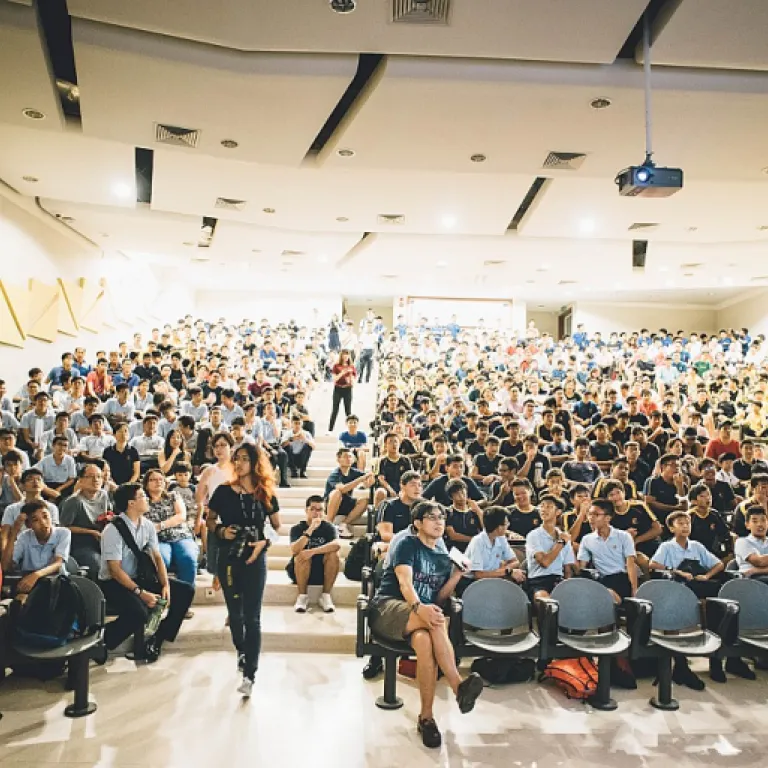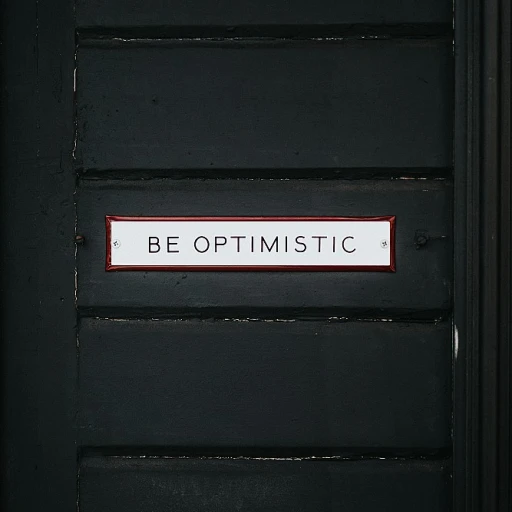
Understanding the Skills Gap
The Concept of Skills Gap
Understanding the skills gap is the first step towards addressing the challenges it presents in the workforce and the education sector. A skills gap refers to the disconnect between the skills that employers need and the skills that employees have. This gap is evident across various industries and can impede business performance and workforce productivity. In the realm of education, skills assessments play a vital role in identifying and bridging these gaps. Traditional methods often rely on standardized testing, which may not provide a comprehensive evaluation of a student's capabilities. Innovative assessment techniques are emerging to offer more nuanced insights into student performance and areas of improvement.Identifying the Disconnect
For educators and managers, the ability to assess skills accurately is fundamental. By employing diverse assessment methods, such as video interviewing and real-time feedback, educators can obtain a clearer picture of the learner's strengths and weaknesses. Current methods emphasize practical performance evaluation, moving beyond theoretical knowledge to include real-life problem solving and cutting-edge assessments. Further, it's important to employ both traditional and innovative approaches to tailor assessments based on specific learning experiences. By doing so, educators can provide tailored feedback that fosters growth and offers avenues for improvement. In conclusion, understanding the skills gap and employing effective assessment techniques is crucial for addressing skills shortages. Educators and managers must adopt a flexible approach that incorporates innovative methods for real-time skill evaluations to enhance both workforce performance and student learning outcomes.The Role of Technology in Skills Assessment
The Technological Evolution in Skills Assessment
As the demand for a skilled workforce intensifies, technology plays a pivotal role in transforming how assessments are conducted. The traditional methods of skill evaluation are increasingly being complemented or even replaced by innovative technological solutions. These advancements promise to provide more accurate and real-time feedback, essential for both students and educators aiming for continuous improvement in education.
One such advancement is the use of online platforms that facilitate video interviewing. This technique allows for a more holistic assessment, simulating real-life work scenarios that can accurately assess an individual's problem-solving abilities and performance under pressure. Video interviewing not only offers a dynamic learning experience but also enables educators to identify strengths areas and specific areas for improvement more efficiently than traditional assessment methods.
Real-time feedback mechanisms are another cutting-edge tool in the skills assessment repertoire. Such systems provide instantaneous evaluation, allowing students to understand their performance metrics and educators to tailor teaching methods accordingly. This immediate feedback is critical for time management, helping students promptly address areas of concern.
Moreover, technology-driven assessments make use of data analytics, which enable the personalization of learning experiences. By analyzing student performance data, educators can develop customized learning plans that focus on specific skills gaps, thereby enhancing overall educational outcomes.
In addition to improving student assessments, these innovative tools also contribute to workforce readiness by ensuring that employees are equipped with the necessary skill sets. Real-time, data-based assessments allow organizations to make informed decisions regarding employee training and development, ultimately leading to improved performance and productivity.
While these technological advancements hold significant promise, their implementation is not without challenges. However, the potential benefits in education and workforce management continue to drive the push for more sophisticated assessment techniques.
Innovative Assessment Techniques
Revolutionizing the Way We Assess Skills
In an era where efficiency and precision are paramount, innovative assessment techniques are proving invaluable for addressing skill gaps. Traditional methods of evaluation often fall short in the dynamic landscape of modern education and workforce development. It's crucial for educators and employers to adopt cutting-edge assessment techniques to enhance learning and adequately prepare students and employees for real-life scenarios.- Technology-Based Assessments: Technology has played a transformative role in education and assessments. These methods allow for the easy integration of feedback loops and performance metrics. By leveraging platforms that provide real-time evaluation, educators can tailor instructions to meet individual student performance and learning experiences, heralding a new age of adaptive learning.
- Video Interviewing: Video interviewing techniques are another assessment method enabling educators and employers to observe problem-solving abilities and communication skills in a more lifelike context. Through this medium, assessments are not only more robust but also provide feedback that reinforces a personalized learning process.
- Experiential Learning and Performance Tasks: Performance-based assessments focus on real-world application, allowing students and employees to demonstrate their strengths and areas in need of improvement in practical settings. This approach fosters a learning experience that is closely aligned with workplace expectations.
- Continuous and Adaptive Feedback Systems: Real-time feedback systems are increasingly being adopted to provide instant and ongoing insights. These systems help in constant evaluation, ensuring that areas of improvement are addressed promptly, which significantly enhances both student and employee performance.
Case Studies: Successful Skills Gap Assessments
Real-World Examples of Effective Skills Gap Assessments
Examining successful skills gap assessments provides valuable insights into effective strategies and techniques that can be applied across various sectors. These case studies demonstrate the practical application of innovative methods and illustrate the potential impact on student performance and workforce readiness.
Integrating Technology for Immediate Feedback
One prominent example of successful skills gap assessment involves the deployment of technology-driven assessments that offer real-time feedback to both students and educators. By leveraging advanced software, these assessments facilitate immediate identification of students' strengths areas and areas for improvement, allowing for targeted learning interventions.
Utilizing Video Interviewing for Performance Evaluation
Another innovative approach features the use of video interviewing to assess employee competencies and problem-solving skills. This method provides a more nuanced evaluation of an individual's abilities in real-life scenarios compared to traditional assessment techniques. It enables a dynamic assessment environment where tangible human interactions are simulated, yielding more comprehensive performance insights.
Transitioning from Traditional to Cutting-Edge Assessment Methods
In the realm of education, certain institutions have transitioned from traditional paper-based assessments to technology-enhanced strategies. This shift has resulted in a more engaging learning experience, where students benefit from interactive and adaptive questioning formats that truly cater to their educational needs.
Systematic Evaluation for Management Insights
Case studies within corporate settings highlight the efficacy of systematic skills evaluation for workforce management. By assessing skills comprehensively and regularly, organizations can tailor professional development programs to enhance employee performance. These based assessments provide a strategic advantage in aligning educational and training efforts with organizational goals.
These examples underscore the importance of flexible and adaptive assessment techniques in fostering continuous improvement. As new approaches continue to evolve, educators and employers are better equipped to address the skills gap effectively, ensuring responsive and well-rounded development pathways for both students and employees.
Challenges in Implementing New Assessment Techniques
Overcoming Barriers in Skills Gap Assessment
Tackling the skills gap through innovative assessments can be daunting due to several challenges. Transitioning from traditional assessment techniques to cutting-edge methods is not a straightforward process for educators and organizations. Here’s a closer look at some of the hurdles faced:- Resistance to Change: One major challenge is the resistance from educators and employees when shifting from traditional methods to technology-based assessments. Familiar habits often feel more comfortable, even if they are less effective in evaluating real-world skills.
- Resource Limitations: Implementing new assessment techniques can require substantial investments in technology, training, and time. Many educational institutions or companies may struggle with the needed resources to implement such changes effectively.
- Data Security and Privacy: With the introduction of video interviewing and real-time assessments, managing and safeguarding sensitive data becomes crucial. Compliance with privacy standards is essential to protect student performance data and maintain trust.
- Tailored Solutions: Designing assessments that match the needs of diverse learner groups can be complex. Customization is key in providing relevant learning experiences and feedback, yet it demands significant expertise and effort.
- Performance Metrics: Evaluating the success of new methods remains challenging. There is often a gap in measuring improvement accurately in areas such as problem-solving and student engagement compared to traditional techniques.
Future Trends in Skills Gap Assessment
Emerging Trends in Skills Gap Evaluation
As we look to the future, the landscape of skills gap assessment is evolving rapidly, driven by technological advancements and changing workforce demands. The integration of real-time feedback mechanisms and adaptive learning platforms is at the forefront of this transformation. These tools allow educators and employers to assess student and employee performance more dynamically, offering insights into areas for improvement as they arise.
One of the most promising trends is the use of data analytics to tailor learning experiences. By analyzing performance data, educators can identify strengths and areas for improvement, enabling a more personalized approach to skill development. This method not only enhances the learning experience but also ensures that assessments are more aligned with real-life job requirements.
Video interviewing is another innovative assessment technique gaining traction. It provides a platform for evaluating problem-solving skills and communication abilities in a more interactive and realistic setting. This approach is particularly useful in assessing soft skills, which are often overlooked in traditional methods.
Moreover, the shift towards competency-based assessments is reshaping how we evaluate skills. These assessments focus on the application of knowledge in real-world scenarios, offering a more accurate measure of an individual's capabilities. This trend is supported by the growing demand for workforce management solutions that prioritize skill-based evaluations over traditional qualifications.
Finally, the role of artificial intelligence in skills gap assessment cannot be overstated. AI-driven tools are being developed to provide real-time analysis and feedback, helping to identify gaps and suggest targeted improvement strategies. This cutting-edge technology is set to revolutionize the way we approach skills development, making assessments more efficient and effective.
As these trends continue to develop, it's crucial for educators and employers to stay informed and adapt their assessment methods accordingly. Embracing these innovations will not only improve learning outcomes but also ensure that the workforce is equipped with the skills needed to thrive in an ever-changing environment.












